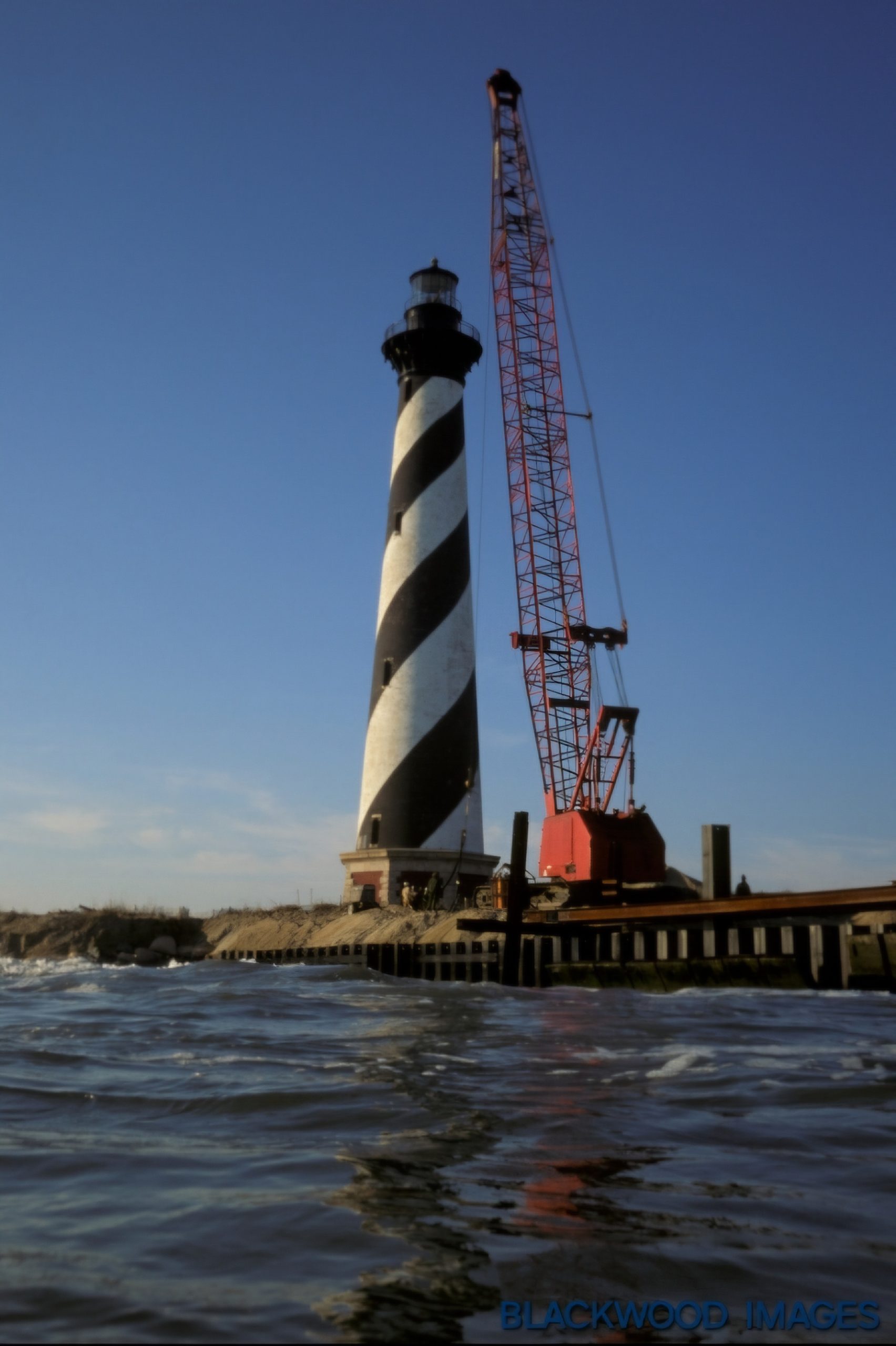There were several pieces of good news related to Buxton Beach at Monday’s Board of Commissioners (BOC) meeting, starting with an announcement that the Buxton jetties repair project was on the edge of moving forward.
“I was at the Coastal Resources Commission (CRC) meeting last week, and in that meeting, I had conversations with them and their staff about the groins [or jetties] that are down by the lighthouse,” said Bobby Outten, Dare County Manager and Attorney, at Monday’s meeting. “We’ve talked a long time about repairing those groins, and what that would do to the life of a beach nourishment project in Buxton.”
Outten said Patrick Barrineau, Vice President of Coastal Science & Engineering (CSE), recently conducted an in-person examination of the jetties to determine if they could be repaired. CSE has partnered with Dare County on a number of shoreline-focused projects over the years, including the Avon and Buxton beach nourishment projects of 2017 and 2022.
“Patrick and his team took a look, and they’re telling us that they meet the 50% rule, which was the rule that was preventing us from repairing those groins or jetties that are there,” said Outten, “If he can, he’s willing to seal it and tell the Coastal Resources Commission, and [the CRC] told me that they would give us a permit under the 50% rule that would allow us to go forward.”

The three Buxton jetties were built by the Navy in the 1960s/1970s to protect their military facilities, but they have deteriorated over the years, and there are now concrete laws in place when it comes to adding or repairing permanent structures like jetties on any North Carolina coastline.
For decades, it has been the policy of North Carolina, as outlined in the Coastal Area Management Act (CAMA), to ban hardened structures along the state’s shorelines, but there have been some adjustments or variances to these rules. For example, exceptions have been made to protect historic and unmovable structures, or important waterways needed for navigation.
Also under the current law, if there is an existing grandfathered-in jetty or other hardened structure, and 50% or more of it still exists, it can be repaired. If there’s less than 50% of the original structure remaining, it’s considered a total rebuild or replacement, which is not allowed.
Previous studies found that less than 50% of the Buxton jetties were remaining, and as a result, they could not be repaired under the existing law.
But at the February BOC meeting, Outten reported that CSE engineers were working to determine if 50% or more of the jetties exist when taking into account the part of the structure that is covered by sand and water.
“What we’re asking them to do, which hasn’t been done yet, is to take the full length and run of the jetty [into account], see what’s under the water and what’s above the water, and see if there’s a way to shoehorn it into that 50% rule,” said Outten at February’s meeting. “If there is, then we’re at a place where it’s a permittable project through the Coastal Resources Commission.”
After this recent CSE visit where Barrineau and his team stated that the Buxton jetties would indeed pass the 50% threshold when all aspects of the structure were considered, the jetties repair project suddenly has new life.
Because the jetties are within the Cape Hatteras National Seashore, the National Park Service (NPS) would also be involved in allowing the project to go forward, but Outten stated that he spoke with Superintendent David Hallac, who said the NPS was open to these conversations.
“So we have a path forward that for the longest time we didn’t have,” said Outten. “We also have a funding source for it, because the cost of doing this is about the [$3.5] million we just saved.”
The $3.5 million Outten was referring to was the second piece of good news related to Buxton Beach.

At Monday’s meeting, Dare County Finance Director David Clawson shared an update on the planning for next year’s beach nourishment project in Buxton.
In the past year or so, two studies have been conducted ahead of the 2026 beach nourishment project to gauge the amount of sand that was lost since the last beach nourishment project in 2022.
Clawson stated that while the first estimates from CSE found that Buxton had lost 175,000-200,000 cubic yards of sand since 2022, the new estimated total of sand loss was closer to 1.3 million.
The reason why this is good news is because FEMA provides matching funds for maintenance beach nourishment projects, and a higher amount of sand loss means a higher contribution of federal dollars.
“Our beach nourishment model included a million-cubic-yard project in 2027, which we changed to 2026, and which was going to cost an [estimated] $17.2 million,” said Clawson. “CSE’s new recommendation is a two-million-cubic-yard project, but with this new FEMA loss number, it will cost us $3.5 million less than what we had as our cost in the original beach nourishment model.”
The Commissioners were happy with the surprising good news, but were also amazed at the huge difference between the two sand estimates, which were conducted a year apart.
“How do you miss by a factor of eight?” asked Commissioner Ross.
Per Clawson, FEMA’s erosion rate is a long-term erosion rate, and it takes into account specific named storms as well as unnamed storms, such as the series of winter and spring storms in 2024 which resulted in massive amounts of erosion and sand loss in Buxton. As such, CSE was able to adjust for sand loss from these unnamed storms in their new estimate, bringing the total of sand loss to roughly 1.3 million cubic yards.
“It’s very good news,” said Clawson.
With this in mind, Outten pointed out that the unexpected $3.5 million in savings from the 2026 beach nourishment project could be redirected to the new Buxton jetties repair project.
“We could do the [Buxton jetty] project, repair the groins, and spend the same amount of money that we had budgeted for that [Buxton nourishment] project already, and move forward,” said Outten.
The BOC unanimously voted to ask CSE to begin securing the required permits from CAMA (State of North Carolina), as well as the National Park Service, for the repairs of the Buxton jetties, so that the lifespan of next year’s Buxton beach nourishment project could be extended.
For more information and Buxton updates:
- The full video of Monday’s Board of Commissioners meeting is available online on Dare County’s YouTube channel.
- The Buxton Civic Association (BCA), which has been a leading advocate for the Buxton jetties replacement project, will have its monthly meeting on Thursday, March 6, at 7:00 p.m. at the old Buxton Fire Station, next to Burrus Field.
The public is invited and encouraged to attend, and to hear updates on the Buxton jetties, the BCA’s recent attendance at the Coastal Resources Commission meeting in New Bern, and all of the BCA’s ongoing and upcoming initiatives.











